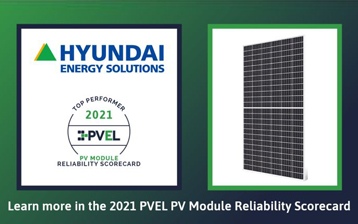Hyundai Energy Solution so called in 2019 is the division of Hyundai Heavy Industries that deals with renewable energy both as a module manufacturer but also as an EPC for multi MW plants.
Hyundai Heavy Industries born in South Korea in 1972, is part of the companies included in the “Fortune 500 Company” and deals with many industrial fields, such as the construction of large ships (the world’s leading manufacturer) or the construction of industrial plants in various sectors.
Integral manufacturer of cells and modules since 2007
In 2004 it inaugurated the “Solar Business” department, starting to fully produce cells and modules in 2007. The company has a large research and development department that led Hyundai to produce modules with PERC (Passivated Emitter and Rear) monocrystalline cells already in 2014, before the current widespread diffusion of this technology.
PERC monocrystalline cells and Shingled technology
The current line of modules are built with PERC monocrystalline cells and Shingled technology. The 166 mm cells are laser cut into 5 equal parts, arranged horizontally and divided into 12 circuits in parallel.
The cell parts are superimposed on each other and electrically connected through electrically conductive adhesives (ECA).
With this technique, Hyundai makes better use of space, improving output power and efficiency, but other advantages are also obtained such as lower risk of hot-spots, less influence to shadows and better mechanical performance.
More reliable modules with respect to thermal and mechanical stresses
In addition, the connection technique between the ECA cells improves the reliability of the modules with respect to thermal and mechanical stress and thanks to the reduction of currents to 1/5 compared to the entire cell, thus reducing losses.
All these technical advantages mean that the modules of the HiE-SxxxVG series also have a more elegant design, especially in the full-black version.
The sizes available for the residential and commercial sector made with 60 M6 cells are between 400 and 410 Wp in the white backsheet version and between 390 and 400 Wp in the completely full-black version.
The modules are also certified with the highest quality standards and in addition to the normal IEC certifications they also have Ammonia, Salt Mist Corrosion, Dust and Sand and anti-PID certifications, thus making the module installable even in the most adverse conditions.






